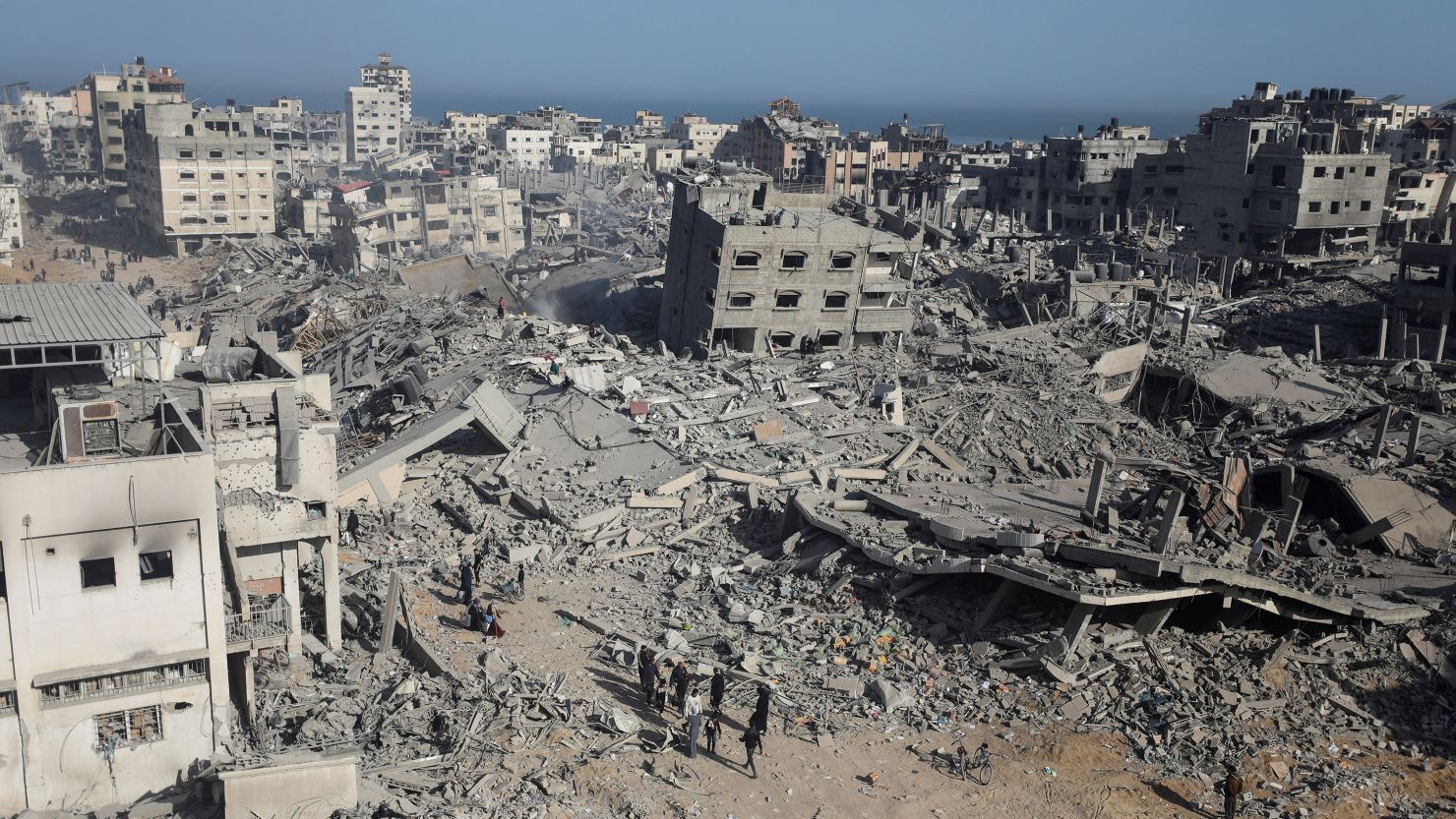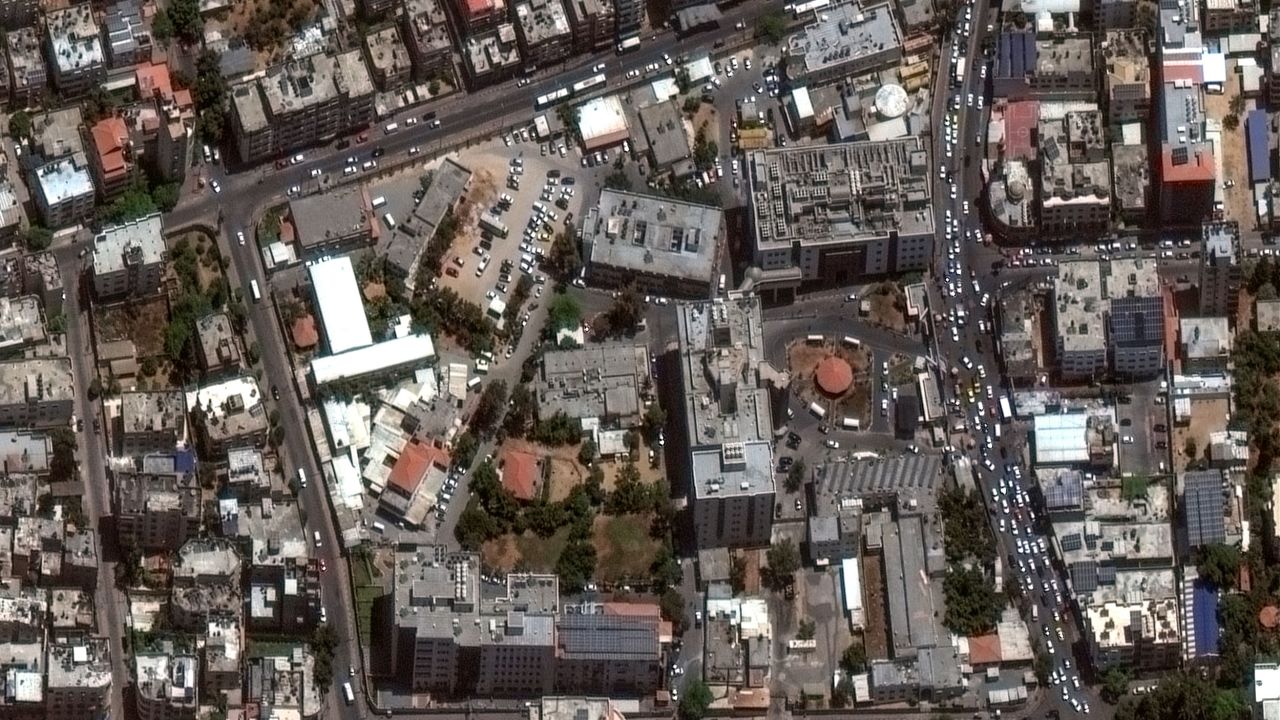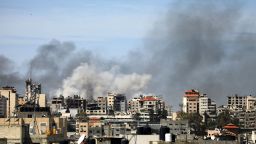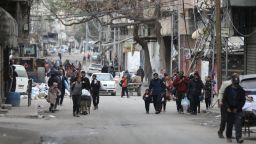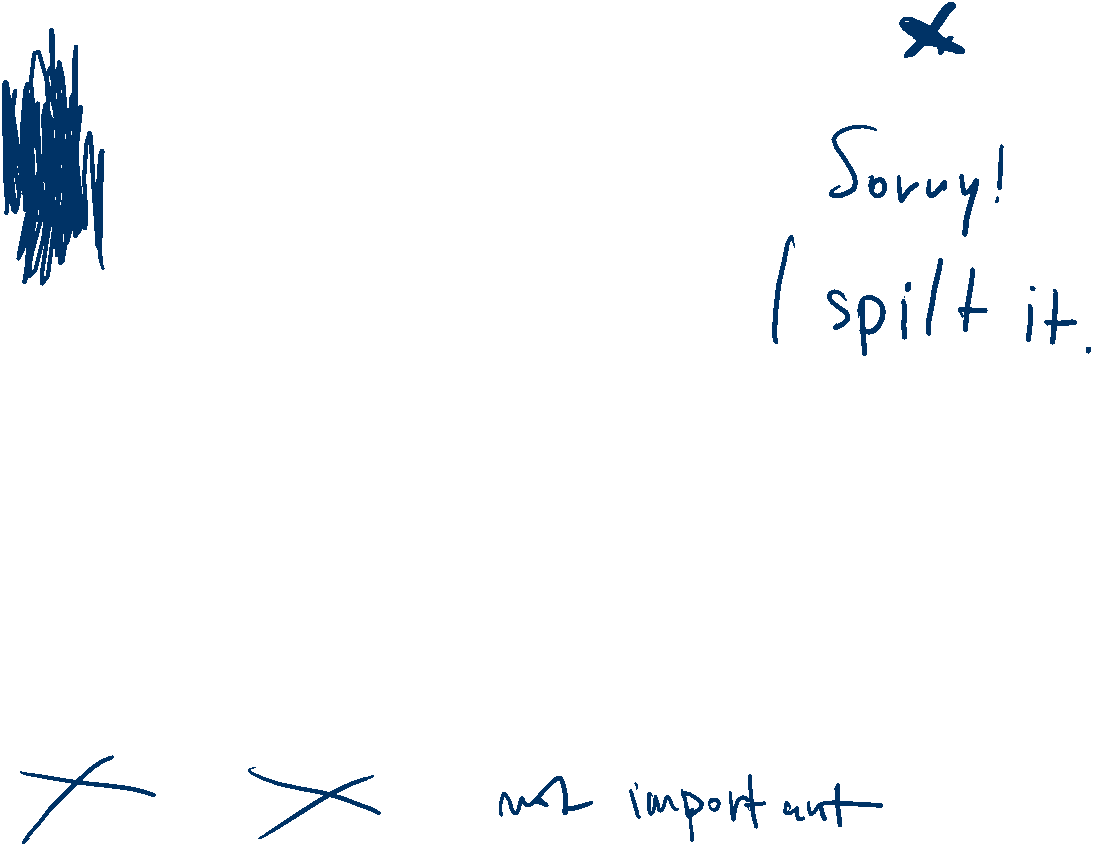Israel’s military has withdrawn from Gaza’s largest hospital, Al-Shifa, after a 14-day siege that witnesses and Palestinian officials say has left buildings largely destroyed and bodies strewn across the complex.
The Israel Defense Forces (IDF) confirmed its withdrawal Monday, saying its troops had killed Hamas militants, and seized weaponry and intelligence documents.
“The terrorist base in Shifa has been eliminated,” Israeli Defense Minister Yoav Gallant said Monday, praising the IDF’s “determined and professional action.”
Medical crews are working to recover hundreds of bodies scattered across the grounds at Al-Shifa, with at least 300 bodies found so far, according to Gaza’s Civil Defense. Determining the precise number of people killed is difficult, it added, because Israeli troops had buried bodies inside and around the complex and bulldozed nearby roads.
Raed al-Dahshan, director of operations at Gaza’s Civil Defense, told CNN it is “almost impossible” for ambulances to reach the hospital due to damaged roads in the city.
IDF spokesman Rear Adm. Daniel Hagari said 900 suspected militants had been detained during its two-week operation. More than 500 of these had been identified as members of Hamas or Palestinian Islamic Jihad (PIJ), Hagari said Monday, adding some of those detained are “commanders and significant people.”
CNN is unable to verify the numbers of bodies inside Al-Shifa independently because of the lack of reporting access in Gaza. CNN has reached out to the IDF on these figures but is yet to hear back.
Gaza’s Ministry of Health said about 3,000 people were inside the hospital when the IDF began its raid on March 18 – its second on the facility in nearly six months of war with Hamas.
After claiming its first operation in November had been a success, the IDF in January said it had completely dismantled Hamas’ command structure in northern Gaza – only for Hamas reportedly to return to the same site months later, sparking a renewed Israeli assault.
Khader Al Za’anoun, a journalist from the official Palestinian news agency Wafa also working for CNN, said the scene at Al-Shifa after the IDF’s withdrawal was like a “horror movie.”
“Bulldozers crushed bodies of people everywhere around and in the yard of the hospital,” Al-Za’anoun said.
Palestinians began arriving at the destroyed complex to search for missing family members. “We found entire families dead and their bodies are decomposed in houses around the hospital,” he said.
Survivors in the complex are malnourished, he added, with some saying they had to share one battle of water between six people each day.
“The situation is very bad,” said Mahmoud Bassal, a spokesperson for Gaza’s Civil Defense, on Monday. Al-Shifa is “completely destroyed and burned down. Many of its buildings are totally destroyed or charred,” he said.
Images from the area showed widespread destruction with charred and pockmarked buildings inside the complex. More than 30 wounded people were transported from Al-Shifa to the Al-Ahli Baptist Hospital east of Gaza city, Bassal said.
Several decomposed and disfigured bodies partly buried beneath the rubble of what was once the structures of Gaza’s largest hospital can be seen in videos from obtained by CNN.
Last week, residents of the area around Al-Shifa told CNN there was heavy firing in the vicinity. One family said their home was shelled and that children – some still alive – were buried under the rubble.
Hamas has previously accused Israel of striking targets “without regard” to the patients or medical staff inside – a claim echoed by civilians at the complex.
“Military vehicles are firing at the hospital buildings’ windows, and at anyone who is caught moving between the hallways,” Hamada Abdelhabi, a displaced Palestinian man sheltering at Al-Shifa, told CNN in March.
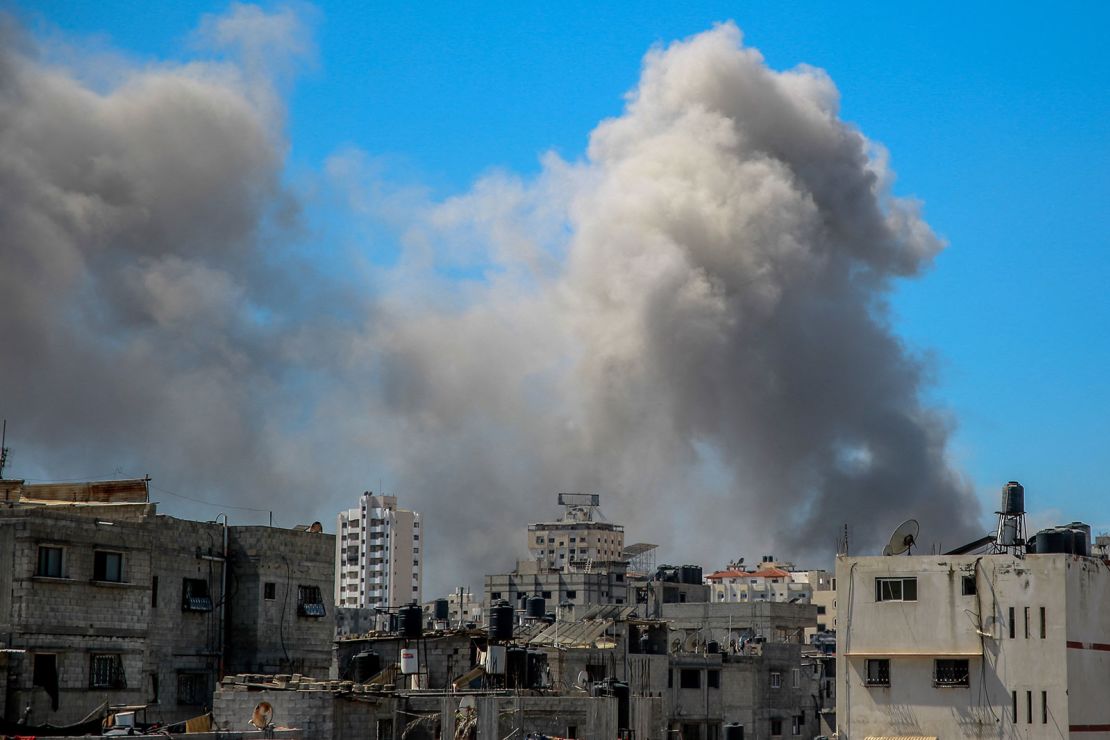
Civilian buildings like hospitals are protected under international humanitarian law, but can lose their protected status if they are used to commit acts harmful to the enemy. Israel has for years said Hamas fighters use mosques, hospitals and other civilian buildings to hide from Israeli attacks and launch their own. Hamas has repeatedly denied the claims.
The IDF said its troops had “killed terrorists in close-quarters encounters, located numerous weapons and intelligence documents throughout the hospital, while preventing harm to civilians, patients, and medical teams.” It stressed its operations in and around the hospitals were a “precise” anti-terror mission and that it had done its utmost to minimize civilian harm.
Second raid
The IDF returned in force to Al-Shifa on March 18, despite Gallant in January announcing that the most intensive phase of operations in northern Gaza was complete.
The United States, Israel’s most dependable but increasingly wary ally, has repeatedly backed Israeli assessments that Hamas and other Gaza militants have used Al-Shifa as a command hub to hold hostages and store weapons.
US National Security Adviser Jake Sullivan said on March 18 that “Hamas came back into Shifa” after Israel’s first raid last year.
But the IDF’s renewed assault on the complex raises questions about the viability of Israel’s war aim of destroying Hamas. Sullivan added that Israel needed to “ensure a sustainable campaign against Hamas so that it cannot regenerate, cannot retake territory.”
International organizations have condemned the siege, with World Health Organization (WHO) Director General Tedros Adhanom Ghebreyesus warning that “hospitals should never be battlegrounds.’
WHO and other humanitarian groups had been warning of an ever-nearing famine in northern Gaza. By late March, 70% of the population was suffering with catastrophic levels of hunger, according to a UN-backed report.
All 2.2 million people in Gaza do not have enough food to eat, with half of the population on the brink of starvation and famine projected to arrive in the north “anytime between mid-March and May 2024,” according to the Integrated Food Security Phase Classification (IPC).
CNN’s Sarah El Sirgany, Hande Atay Alam and Benjamin Brown contribued reporting.
